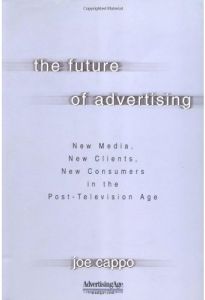Join getAbstract to access the summary!

Join getAbstract to access the summary!
Joe Cappo
The Future of Advertising
New Media, New Clients, New Consumers in the Post-Television Age
McGraw-Hill, 2003
What's inside?
Ad agencies are gripped by consolidation, new media and boutique competitors. Is the future looking up?
Recommendation
Once considered a glamorous, creative and positive influence on American popular culture, the advertising business has changed so dramatically it is almost unrecognizable today. Veteran journalist Joe Cappo uses a personal approach and an historical perspective to explain the problems advertising is facing. Two decades ago, some 20 major agencies, all independent and competing against each other, developed innovative, memorable campaigns for a variety of consumer products. But those days are over. Today, four global marketing communications holding companies control 55% of marketing expenditures. This consolidation curtailed creativity, which has resulted in agencies that produce very few memorable ads or integrated marketing efforts despite unprecedented resources. Refreshingly, Cappo does not temper his industry critique in this slightly disjointed, but well-written explanation, which is buttressed by short articles from other industry experts. Cappo sounds a wake-up call for agencies to reform themselves or lose out to more effective marketing approaches from upstart independent agencies or product manufacturers. Anyone responsible for advertising budgets or for developing marketing campaigns will benefit from Cappo’s view of the past – and possible future – of advertising.
Summary
About the Author
Joe Cappo is senior vice president for Crain Communications, Inc., and the former publisher of Advertising Age magazine. He also served as the world president of the International Advertising Association.
















Comment on this summary